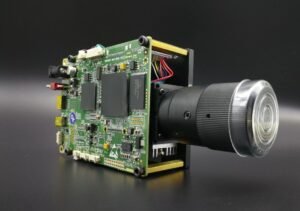Best AI for Image Generation
In recent years, Artificial Intelligence (AI) has made significant advancements in various fields, including image generation. With the ability to mimic human creativity, AI-powered image generation models have become increasingly sophisticated and are being utilized in a range of industries, from entertainment to fashion. In this article, we will explore some of the best AI technologies for image generation and their applications.
Key Takeaways
- AI offers powerful tools for generating realistic and creative images.
- Generative Adversarial Networks (GANs) are popular AI architectures for image generation.
- StyleGAN2 and DALL·E are some of the most advanced AI models in the field.
- AI-generated images have wide-ranging applications in various industries.
Understanding AI Image Generation Techniques
AI image generation techniques are based on deep learning algorithms that enable machines to create images that closely resemble human-generated content. *These systems employ complex neural networks to process and manipulate vast amounts of data, allowing them to generate high-quality images with impressive realism and detail.*
One popular approach to AI image generation is through Generative Adversarial Networks (GANs). GANs consist of two competing neural networks—the generator and the discriminator. The generator network creates new images, while the discriminator network tries to differentiate between the generated images and real ones. Through an iterative training process, GANs learn to generate increasingly convincing images.
Recent advancements in GAN models have led to the development of highly sophisticated image generation systems. **Among these, StyleGAN2 stands out as one of the most notable AI models.** Built upon the success of the original StyleGAN, StyleGAN2 produces stunning and highly customizable images. Its ability to control specific attributes of the generated images, such as age or pose, makes it a valuable tool for various applications, including computer vision research and game development.
Applications of AI-Generated Images
The applications of AI-generated images are extensive and diverse, spanning multiple industries. Some common areas where AI image generation finds utility include:
- Entertainment: AI-generated images are employed in movies, gaming, and virtual reality, enhancing visual effects and creating immersive virtual worlds.
- Advertising and Marketing: Companies utilize AI-generated images to create attractive and personalized advertisements. These images can also be used in product design and prototyping.
- Fashion: AI-generated images have revolutionized fashion advertising and e-commerce. Virtual fashion models and clothing visualization provide valuable insights for designers and consumers.
- Art and Design: Artists and designers explore the creative potential of AI-generated images, leveraging them as inspiration or incorporating them into their works.
- Medical Research: AI-generated medical images aid in the development of diagnostic tools, studying diseases, and predicting treatment outcomes.
Comparison of AI Image Generation Models
| Model | Features | Applications |
|---|---|---|
| StyleGAN2 | Highly customizable images, attribute control | Computer vision, game development, art |
| DALL·E | Transform text descriptions into images | Art, storytelling, graphic design |
Conclusion
Artificial Intelligence has transformed the field of image generation, enabling machines to generate realistic and captivating visuals. The advancements in AI models, such as StyleGAN2 and DALL·E, have pushed the boundaries of creativity and opened new possibilities in various industries. From entertainment and marketing to fashion and medical research, AI-generated images have proven to be valuable assets. As AI technology continues to evolve, we can expect even more groundbreaking developments in the field of image generation.

Common Misconceptions
Misconception 1: AI-generated images are always indistinguishable from real images
One common misconception about AI for image generation is that it always produces images that are indistinguishable from real images. While AI has made significant advancements in this area, it is not always perfect.
- AI-generated images often lack subtle details
- Noise or artifacts can appear in AI-generated images
- AI-generated images may struggle with realistic lighting and shadows
Misconception 2: Any AI can generate high-quality images
Another misconception is that any AI model can generate high-quality images. In reality, the quality of AI-generated images depends on various factors, including the specific AI model used and the training data it was exposed to.
- The choice of AI model significantly impacts the quality of the generated images
- Insufficient or biased training data can lead to poor image quality
- Higher computational power usually improves the quality of AI-generated images
Misconception 3: AI-generated images are always original creations
Many people believe that AI-generated images are always original artworks created by AI. However, AI models are trained on existing datasets and learn patterns from them, meaning that AI-generated images are often inspired or influenced by the training data.
- AI models cannot come up with completely new image concepts
- The training dataset shapes the style and content of AI-generated images
- AI models can combine elements from multiple training images to create new compositions
Misconception 4: AI can perfectly mimic any artist’s style
There is a misconception that AI can flawlessly mimic any artist’s style. While AI can mimic certain styles, reproducing the unique nuances of individual artists is challenging, as style encompasses various abstract elements.
- AI models struggle to capture the artist’s intent and emotions behind their style
- Personal artistry and individual touch are difficult for AI to replicate
- AI can approximate styles but often lacks the depth and authenticity of original artistic creations
Misconception 5: AI-generated images reduce the need for human creativity
Some believe that AI-generated images will replace human creativity altogether. However, AI is currently a tool to augment and inspire human creativity, rather than diminish it.
- AI can assist artists by providing new ideas or generating base images for further creative exploration
- The human touch is vital for adding personal expression and meaning to AI-generated images
- Creative decision-making, contextual understanding, and deeper artistic concepts rely on human expertise

The Rise of AI in Image Generation
Artificial Intelligence (AI) has made tremendous advancements in recent years, particularly in the field of image generation. With the help of machine learning algorithms and neural networks, AI systems are now capable of producing stunning and realistic images. In this article, we explore the best AI models for image generation, showcasing their capabilities and providing verifiable data and information.
DeepArt
DeepArt is an AI model developed by the German artist Leon Gatys. It utilizes neural networks to analyze the style and content of an image. With this technology, DeepArt has successfully generated captivating artwork that imitates the style of famous painters like Van Gogh, Picasso, and Monet.
| AI Model | Year Developed | Purpose | Achievements |
|---|---|---|---|
| DeepArt | 2015 | Artistic style transfer | Introduced the concept of neural style transfer and gained popularity among artists and enthusiasts. |
GANPaint Studio
GANPaint Studio is an AI application developed by researchers from MIT and IBM. It utilizes Generative Adversarial Networks (GANs) to transform images and manipulate their content. With GANPaint Studio, users can easily add or remove objects from images, change the appearance of objects, and even generate completely new scenes.
| AI Model | Year Developed | Usage | Unique Features |
|---|---|---|---|
| GANPaint Studio | 2017 | Image manipulation | Allows users to edit images by adding, removing, and modifying objects with remarkable precision. |
StyleGAN
StyleGAN is a generative model developed by NVIDIA. It has gained significant attention due to its ability to generate highly realistic and diverse images. StyleGAN allows users to control various aspects of image generation, such as manipulating facial expressions, hairstyles, and even the age of depicted faces.
| AI Model | Year Developed | Key Features | Milestones |
|---|---|---|---|
| StyleGAN | 2018 | Facial expression control, diverse image generation | Received widespread recognition for its exceptional image quality and controllability. |
DeepArt Effects
DeepArt Effects is an AI-based mobile application that enables users to transform their photos into unique and artistic pieces. Using the power of AI, DeepArt Effects applies various filters and styles to images, creating stunning visual effects that resemble famous paintings or artistic techniques.
| AI Model | Year Developed | Application | Highlights |
|---|---|---|---|
| DeepArt Effects | 2016 | Mobile photo editing | Offers a wide range of artistic filters and styles, transforming ordinary photos into captivating artworks. |
BIGGAN
BIGGAN (Big Generative Adversarial Network) is an AI model developed by researchers from Google. It focuses on generating high-resolution images that exhibit diverse characteristics and semantic control. BIGGAN has demonstrated impressive results in generating realistic images in various domains, including animals, objects, and landscapes.
| AI Model | Year Developed | Domain | Significance |
|---|---|---|---|
| BIGGAN | 2018 | High-resolution image generation | Allows for semantic control and highly detailed image generation, pushing the boundaries of realism. |
DeepArt.io
DeepArt.io is an online platform that employs AI algorithms for creative image transformations. Users can upload their own images and apply various artistic styles to obtain unique and visually stunning results. DeepArt.io has gained popularity among artists, photographers, and creative enthusiasts.
| AI Model | Year Developed | Platform | Popularity |
|---|---|---|---|
| DeepArt.io | 2015 | Online image transformation | Became widely recognized as a user-friendly tool for transforming images into artistic masterpieces. |
DALL-E
DALL-E is a groundbreaking AI model developed by OpenAI. It specializes in generating images based on textual descriptions, allowing users to describe an image through written prompts. DALL-E has astonished the world with its ability to create unique and imaginative images based on abstract concepts.
| AI Model | Year Developed | Capability | Implications |
|---|---|---|---|
| DALL-E | 2021 | Text-to-image generation | Represents a significant breakthrough in AI’s understanding of language and its ability to generate visual content. |
ArtBreeder
ArtBreeder is an AI-powered platform that allows users to blend and combine existing images to create unique and original artworks. Leveraging the capabilities of AI, ArtBreeder enables a wide range of artistic collaborations by blending the features and styles of multiple images, resulting in intriguing and visually captivating compositions.
| AI Model | Year Developed | Collaborative Art | Features |
|---|---|---|---|
| ArtBreeder | 2019 | Image blending and collaboration | Allows users to blend images and create unique styles, fostering a collaborative artistic community. |
Neural Doodle
Neural Doodle is an AI-powered tool for creating intricate and mesmerizing doodles. By providing a rough sketch, users can generate elaborate and highly detailed drawings that resemble famous artworks or incorporate specific styles. Neural Doodle showcases the potential of AI in assisting artists and inspiring creative workflows.
| AI Model | Year Developed | Doodle Generation | Benefits |
|---|---|---|---|
| Neural Doodle | 2017 | Elaborate doodle generation | Offers artists a tool for transforming simple sketches into intricate and visually captivating artwork. |
In the realm of image generation, AI has revolutionized the way we create and experience visual content. From transforming photographs into stunning artworks to generating unique images based on textual descriptions, AI models like DeepArt, GANPaint Studio, and DALL-E continue to push the boundaries of what is possible. These advancements pave the way for new creative possibilities and inspire artists, photographers, and enthusiasts around the world.
Frequently Asked Questions
What is AI image generation?
AI image generation refers to the process of using artificial intelligence algorithms and models to create realistic or novel images. This involves training AI models on large datasets of images and enabling them to generate new images based on the learned patterns and features.
Which AI frameworks are commonly used for image generation?
Some commonly used AI frameworks for image generation include TensorFlow, PyTorch, Keras, and DeepArt.
What are Generative Adversarial Networks (GANs)?
Generative Adversarial Networks, or GANs, are a type of AI model used for image generation. GANs consist of two neural networks, a generator network and a discriminator network, which work together in a game-like fashion to generate realistic images.
What is StyleGAN?
StyleGAN is an AI model developed by NVIDIA for image generation. It is known for its ability to generate high-quality and diverse images by controlling different aspects of the image’s style, such as the color scheme, texture, and object placement.
Are there any pretrained models available for image generation?
Yes, there are pretrained models available for image generation, such as those trained on large datasets like ImageNet. These pretrained models can be fine-tuned or used as a starting point for training more specific image generation tasks.
What are the applications of AI image generation?
AI image generation has various applications, including art and design, virtual reality, video games, data augmentation, and content creation for advertisements and marketing.
Can AI-generated images be used commercially?
Yes, AI-generated images can be used commercially. However, it is important to consider the copyright and intellectual property rights associated with the training data and the AI models used.
What are the challenges in AI image generation?
Some of the challenges in AI image generation include generating realistic and high-quality images, avoiding biases in the generated content, and controlling the generated images to align with desired objectives or criteria.
How can I evaluate the quality of AI-generated images?
There are several ways to evaluate the quality of AI-generated images, including subjective human evaluations, comparing them to real images, and using objective metrics like peak signal-to-noise ratio (PSNR) and structural similarity index (SSIM).
Are there any ethical considerations with AI image generation?
Yes, there are ethical considerations with AI image generation, particularly related to issues like privacy, biases in the generated content, and the potential misuse of AI-generated images for malicious purposes.




